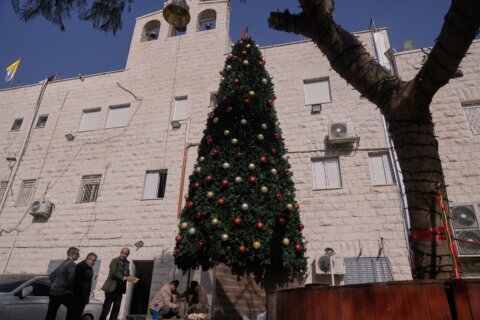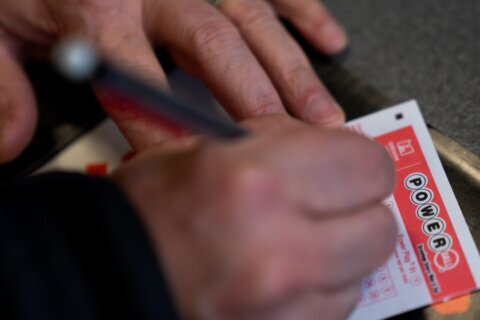As a person of color, Kaneesha Willie has dealt with racism her entire life.
Participating in her hometown’s protest in Paducah, Kentucky, gave her an opportunity to show her young, mixed-race kids that their voices matter, especially as black people are fighting to be heard in the wake of George Floyd’s death.
The 23-year-old said she was proud to see her small town fight for justice in such a big way at the Chief Paduke statue, a historical marker for the town.
“We all bleed red,” Willie said. “We are all one and the protest really showed that our community came together. It was beautiful.”
And the message that Willie believes has been sent to her kids is this: “They are powerful, unique, brave and should be unapologetic about who they are and what they stand for,” Willie said.
Thousands have demonstrated in communities across the world to protest and demand racial justice in the aftermath of George Floyd‘s death. The 46-year-old black man died May 25 at the hands of Minneapolis police with his last moments caught on video.
The national stage has shown us protests in big cities like Washington DC, New York City and Los Angeles, but small towns that dot the map — ones you may never hear about — are also protesting with small acts of solidarity.
State College, Pennsylvania
State College, Pennsylvania, is home to Penn State University, making it predominately a college town. With the majority of its students away for the summer, Ryan Jones was surprised to see hundreds of people show up in the city’s downtown area on Sunday.
The town, 192 miles west of Philadelphia, is in the middle of an otherwise white and rural part of the state, according to Jones.
“Silence very much feels like complicity at this point,” he said. “The anger driving the protests is clearly justified, and no one’s ever made the point better than Dr. King: ‘A riot is the language of the unheard.'”
Local police officers were in attendance but kept their distance and showed restraint, according to Jones. He said while participating he could feel the anger and intensity but the demonstration was peaceful.
Jones and his 15-year-old son marched with what he estimates to be somewhere between 1,000 and 1,500 people.
Farmington, Missouri
During Tuesday’s protest at the St. Francois County Courthouse in Farmington, 73 miles south of St. Louis, Missouri, Grace Gilliam said she felt closer to her community then ever before.
Gilliam, who is home from college for the summer, said growing up, it was difficult to be vocal in Farmington because she found many in her community were narrow-minded. But on Tuesday, she saw people who wanted to embrace other ways of thinking.
“Even if it was small, it was loud, and it was powerful,” she said. “Some people don’t see that these things happen everywhere. It is not specifically in big cities where people of color are facing injustices, it’s all over America.”
Holland, Arkansas
Even though farmer Chad Jones was solo in his efforts, he, too, wanted to show his kids that even the smallest gesture can have the biggest impact.
Holland is home to 552 people and though the community is small, Jones said he wanted to “help change hearts and minds, and show that “not all small towns come with small minds.'”
So he stood outside his farm with his homemade “Black Lives Matter” sign while wearing a “Defend Equality” t-shirt. After a while, a fellow farmer expressed interest in joining him.
“It’s relieving to see more with open minds,” Jones said. “People are angry. This has been going on for years and it keeps happening. I understand why people of color are frustrated.”
Solebury, Pennsylvania
Solebury had its primary elections on Tuesday, so Mallory Carr seized the moment by voting and protesting with her neighbors.
Corr grew up in Solebury, a town with a conservative history. And she says she’s never seen so much activism in her small town, 44 miles north of Philadelphia.
“I was admittedly naïve thinking a protest in my small town wouldn’t matter as much in the shadow of Philly, NYC, and DC nearby but we gathered at a safe distance,” she said.
With protesters socially distanced from one another, Carr and other community members stood along the road between the police station and a church with handwritten signs that said, “Black Lives Matter. White silence is violence.”
“I think real change can happen when you have hard conversations with people, and being a member of this tight-knit community, I can use my privilege to be vocal about what I believe is right,” she said.







